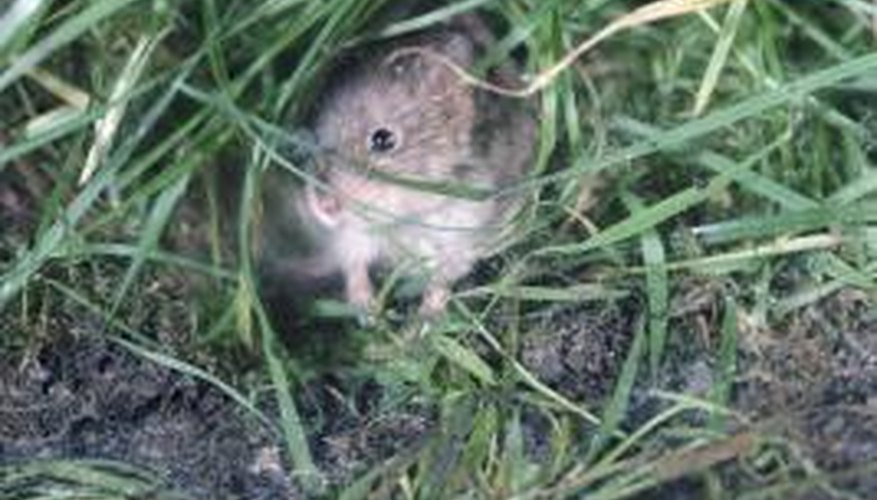The first sign that a rose bush's roots are being eaten is that the plant appears to be in distress. By the time this happens, however, the damage may be so severe that the entire root system is gone. Once you discover an animal has eaten the roots of one rose bush, take action immediately to limit damage to other plants.
Gopher
Gophers are burrowing rodents 6 to 10 inches long. They have fur-lined external cheek pouches used for carrying food and nesting material, large-clawed front paws for digging and four large incisors used for digging and gnawing. Gophers feed on roots, among other plant items, and are a Rosarian's worst nightmare. A gopher can eat the roots of a rose bush quickly, causing extensive damage that may lead to the demise of the plant. Identify gophers by the presence of mounds of dirt in the garden, which form while gophers dig tunnels. The rodents can be controlled by trapping or by using poison baits. The most humane solution is the use of rose baskets, which are constructed from strong wire. These baskets can be used to line a hole before planting a rose bush to deter a gopher from the roots.
- Gophers are burrowing rodents 6 to 10 inches long.
- Gophers feed on roots, among other plant items, and are a Rosarian's worst nightmare.
Moles
There are six species of mole in North America, with the most common being Eastern mole, hairy-tailed mole and star-nosed mole. They are 6 to 8 inches long and weigh 85.1 to 170gr. Moles are insectivores, and eat white grubs (the larvae of Junebugs). While moles don't eat the roots of a rose bush directly, they do considerable damage to the roots while foraging for the grubs. Moles can be detected by the mounds they create, which differ from gopher mounds in that they are more circular and have a "plug" in the middle. The most practical way to control moles is by trapping. The three most effective types of mole traps are harpoon, scissor-jaw and choker loop.
- There are six species of mole in North America, with the most common being Eastern mole, hairy-tailed mole and star-nosed mole.
- Moles can be detected by the mounds they create, which differ from gopher mounds in that they are more circular and have a "plug" in the middle.
Voles
Voles are mouse-like rodents that measure 5 to 8 inches in length. They have blackish-brown to greyish-brown fur, a compact body and a short, furry tail. Voles live below the ground in a burrow system and eat a variety of plant matter, including the roots of rose bushes. Trails in the grass, burrows and droppings are all signs that voles may be present. Voles can be controlled by the use of wire fences that have the bottom edge buried into the ground, by trapping and with poisonous baiting.
- Voles are mouse-like rodents that measure 5 to 8 inches in length.
- Voles can be controlled by the use of wire fences that have the bottom edge buried into the ground, by trapping and with poisonous baiting.
